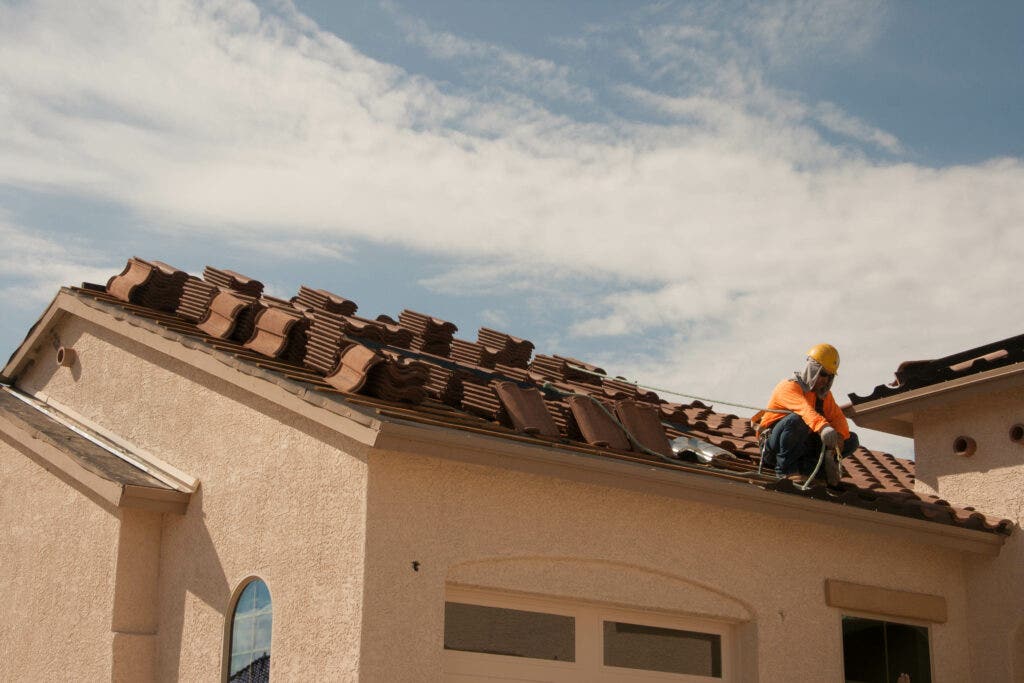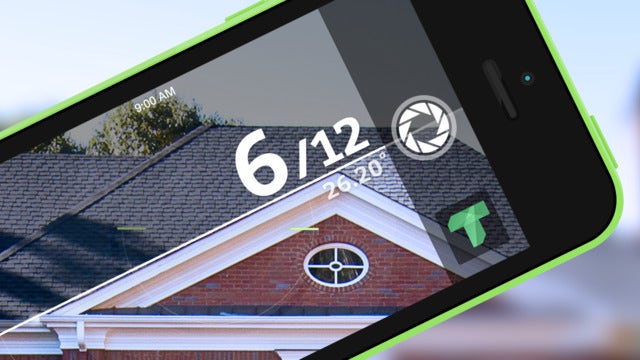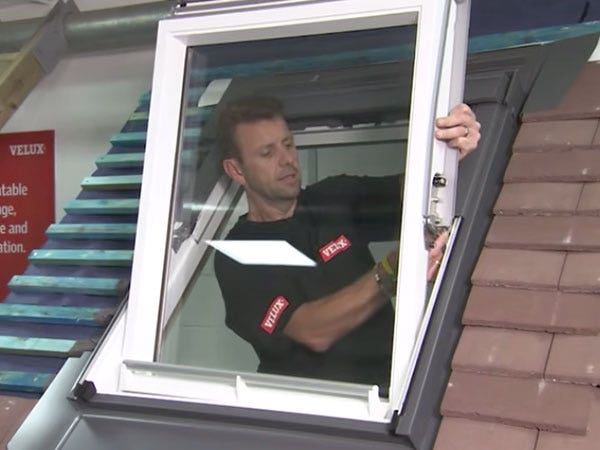How To Guides
How to measure roof pitch


Why Measure Roof Pitch?

There are a number of reasons you might want to find out how to work out the pitch of a roof. You might be installing a skylight, or replacing tiles – in either case, your roof pitch angles can make a huge difference in which product you pick. If you’re planning an extension or an alteration to your house, the existing roof pitch angle may dictate the designs you can use. As such, finding out how to calculate roof pitch in degrees is an invaluable skill.
If you're wondering how to work out the pitch of a roof, hopefully, this article will help. There are a few ways of doing this, from using an online flat roof pitch calculator to an old-fashioned tape measure and some maths. This article aims to give you an overview of the methods available to you for measuring your pitch roof angle. With any luck, by the end, you should have a better understanding of how to calculate roof pitch in degrees.
In roofing terminology, when trying to calculate roof pitch angle you’re usually working from the ‘run’ (the horizontal distance between the peak of the roof and the wall) and the ‘rise’ (the height of the peak above the wall). You may also see mention of the ‘span’ (the distance between the walls) – on a simple pitched roof this is often twice the ‘run’. But, if you're wondering how to work out the pitch of a roof, there's usually more to it than this.
Measuring your pitch roof angle with any accuracy will require access to the roof itself. If getting to the roof is difficult, you may be able to get a good measurement from the loft space, or at a gable end. It may be helpful to use a long straight edge to average out any unevenness in the roof when you work out roof pitch. Otherwise, little peaks and dips may throw off your measurements. While learning how to work out the pitch of a roof, it's important to bear in mind safety, too.
A Note on Safety
Depending on your circumstances, getting precise roof pitch angle measurements may involve climbing around at height. Please take a great deal of care – a slip may cause a great deal of damage, both to the roof, and more importantly, to you. Safety is always something that should be factored in when learning how to calculate roof pitch in degrees.
If moving in loft spaces to work out roof pitch, take care to step only on the joists (or better yet, lay spreader boards), and be mindful of coming into contact with fibreglass insulation – gloves and a particulate mask may be in order.
For any external work at height, use proper roofing ladders and spreader boards when determining how to work out pitch of roof installations – if that sounds like a hassle, please consider hiring a professional. Falling off a roof will ruin anyone’s day.
Measuring Roof Pitch Without Maths Using A Roof Pitch Calculator UK
When learning how to calculate roof pitch in degrees, there are several ways to achieve this. There are a variety of tools available to measure angles without resorting to a tape measure and a calculator. So if you're looking to learn how to work out pitch of roof installations, the following information can help.
Mobile Apps

If you have an iPhone or an Android device, there are a great number of free roof pitch calculator UK apps available that use the phone’s internal gyroscope to measure your pitch roof angle. A smartphone flat roof pitch calculator has the advantage of being convenient, and the disadvantage that phones are very short. To counteract that, you’ll definitely want to make use of a straight edge which is an essential tool for anyone learning how to calculate roof pitch in degrees.
Slightly more sophisticated roof pitch calculator UK apps combine the phone’s gyroscope with its camera, letting you line up the edge of your roof with a line on your screen to get an approximate measurement of your roof pitch angle. The problem with this method is it’s subject to parallax issues – where you’re standing in relation to the roof can introduce a fairly significant error when you work out roof pitch. If you're trying to learn how to work out pitch of roof installations and all you want is a quick estimate, this flat roof pitch calculator is probably the fastest method, and doesn’t involve any climbing!
You may also find pitch roof calculator apps similar to the web apps discussed below.
Roof Pitch Finder Apps for Android.
Roof Pitch Finder Apps for iPhone.
Dedicated Roof Pitch Angle Measure Tools

There are a variety of tools available for quickly and accurately taking a pitch roof angle. Varieties intended for construction use often come with integrated spirit levels and rulers. Analogue devices will be cheaper than digital, with the trade-off of being harder to read and possibly more fiddly to use. A straight edge, a sliding bevel and a protractor are all you really need – if you have the patience and are learning how to calculate roof pitch in degrees.
Web Apps
If you're learning how to work out the pitch of roof, a Google search will provide you with your choice of a simple flat roof pitch calculator. This roof pitch calculator UK will require some measurements – usually asking for either the run or span of the roof, and the rise. You needn’t measure the entire roof – measuring out the set distance from the wall (say, a metre) and then measuring the height of roof above that point will usually be sufficient to work out roof pitch.
Using Maths
If you’ve taken your measurements and you don’t want to use an online roof pitch calculator, then you’re in for some simple trigonometry. The formula is fairly simple though can be difficult to comprehend for a beginner learning how to work out pitch of roof installations:
Roof Pitch = 1 ÷ Tangent(Rise ÷ Run)
Unfortunately, unless you’re smarter than me, you’ll need a scientific calculator or Google to find tangent. When learning how to calculate roof pitch in degrees this is considered to be a more advanced method that isn't necessarily suitable for beginners.
We stock tiles compatible with roof pitches from 12.5° to 35°. Take a look at our full range here and filter by 'Minimum Pitch' on the left hand side of the page.







